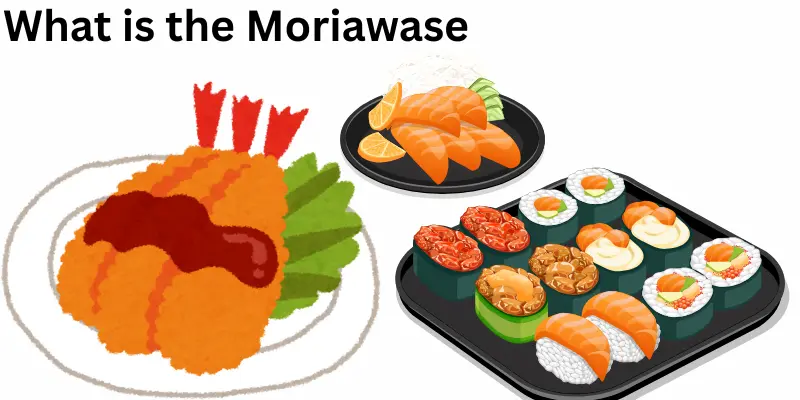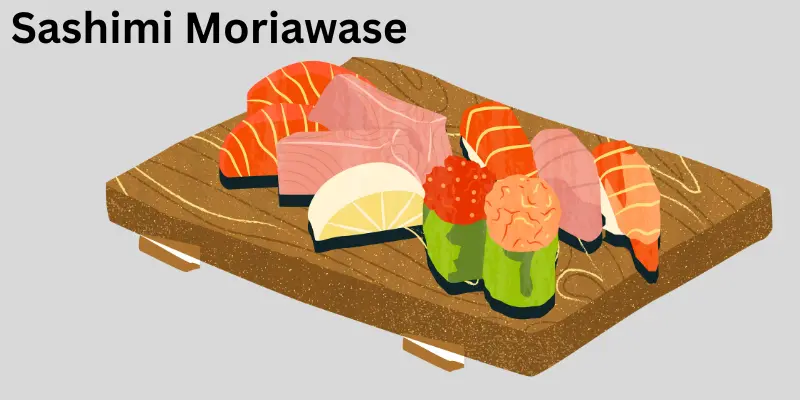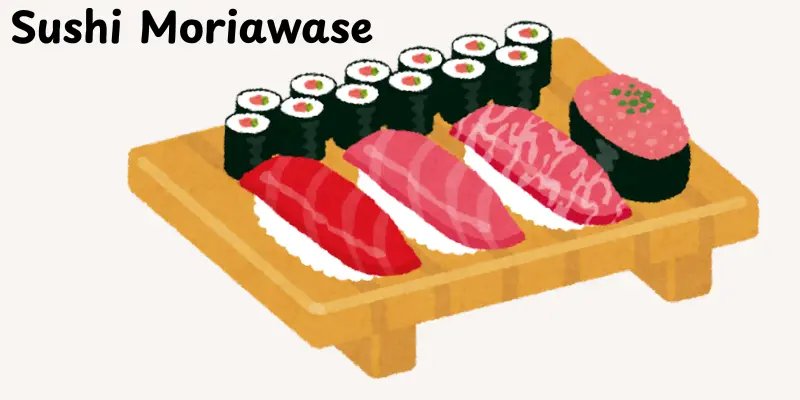Exploring Moriawase: Types, History, & How to Enjoy It
Published: 20 Sep 2025
Moriawase is not only just food. It is a colorful dish full of variety, balance, and beauty. Imagine different flavors in one dish: fresh fish, crunchy tempura, or beautifully made sushi. That is the beauty of Moriawase. It gives you a little of everything in one meal.
In this article, you will discover what moriawase simply means. You will learn about the many types, how they are created, and what to prepare for when you purchase one. We will also look at how moriawase is served at local restaurants, making it simpler for you to try it for yourself.
What is the Moriawase

Moriawase, a Japanese term, means “assortment” or “mixed plate.” In food, it refers to a dish which mixes many things into one dish.In Japanese cuisine, moriawase usually refers to dishes like sashimi moriawase, sushi moriawase, or tempura moriawase. Each one is a mix of different seafood, vegetables, or sushi pieces. Moriawase is loved for its variety, balance, and amazing look.
Types of Moriawase
Moriawase comes in many forms, each with its own taste and style. Here are the most popular types you will find in Japanese cuisine.
Sashimi Moriawase

Sashimi moriawase is a dish of multiple raw fish served together. It often has tuna, salmon, yellowtail, and snapper. Each slice is carefully cut and served with soy sauce, wasabi, and ginger. The quality and variety of sashimi moriawase are its best qualities. Every bite provides a fresh flavor and texture.
Sushi Moriawase

Sushi moriawase is a mix of several sushi foods on a single plate. It usually serves nigiri, sushi rolls, and sometimes special seasonal dishes. This recipe allows you to sample a variety of tastes in one serving. It is perfect for people who love variety and want to try new sushi styles.
Tempura Moriawase

Tempura moriawase is a mix of seafood and vegetables that are deep-fried in a light batter. It often includes shrimp, fish, sweet potato, pumpkin, or eggplant. The coating is crispy while the inside stays soft and tasty. This dish is served hot with a dipping sauce on the side.
Possibly Vegetarian or Seasonal Moriawase
Vegetarian or seasonal moriawase is made with fresh vegetables and fruits of the season. It may include mushrooms, pumpkin, cucumber, or avocado. . Chefs select seasonal ingredients for the finest flavor. This type of moriawase is light, healthy, and full of natural flavors.
Other variations (fusion, local adaptations)
Moriawase can also be made with fusion or specific changes. Some chefs include sauces, spices, or tastes from several foods. In many countries, indigenous fish and vegetables are used instead of traditional Japanese ingredients. These changes keep the spirit of moriawase while providing a unique taste.
History & Cultural Significance
Moriawase has been part of Japanese cuisine culture for many years. The idea started with the art of serving small pieces of different foods together. This showed balance and respect for its variation. It was about both taste and serving.
In Japan, beauty in food is very important. Chefs make moriawase with care, using colors, shapes, and seasonal ingredients. It is usually provided at restaurants or at special events. The dish is seen as a way to enjoy harmony and celebrate unity.
Ingredients & Quality Standards
Moriawase is only as good as its ingredients. Fresh seafood, crisp vegetables, and proper cooking methods make each plate special.
For Sashimi Moriawase
- Tuna
- Salmon
- Yellowtail
- Snapper
- Other seasonal fish
For Tempura Moriawase
- Shrimp or squid
- Pumpkin or sweet potato
- Eggplant or mushrooms
- Light batter made with cold water and flour
- Fried in hot oil at the right temperature
How to Prepare / What’s Involved (for tempura or other moriawase you might make at home)
Making moriawase at home can be fun and rewarding. With a few steps, you can enjoy fresh sashimi or crispy tempura right in your kitchen.
Step-by-Step Tempura Moriawase
- Clean and cut seafood and vegetables into bite-sized pieces.
- Mix a light batter using cold water and flour.
- Heat oil to the right temperature (about 170–180°C).
- Dip each item in batter and fry until golden and crispy.
- Serve hot with dipping sauce and grated daikon.
Tips & Tricks
- Keep the batter cold and do not overmix to stay light.
- Fry small batches so pieces stay crisp.
- Use fresh fish for sashimi and slice just before serving.
- Arrange items neatly on the plate for color and balance.
Why People Love Moriawase
Moriawase is famous because it provides variety in one dish. A single meal might have a variety of tastes, textures, and styles. It is also great for sharing with friends and family.
Another reason is worth. Instead of choosing a single dish, you eat several at once. Moriawase is a great way for newcomers to Japanese cuisine to taste and discover their favorite dishes.
Tips for Choosing Good Moriawase
Picking the right moriawase can make your meal more enjoyable. Here are a few simple things to check before you order or prepare it.
For Sashimi Moriawase
- Look for bright, natural color.
- Fish should have a clean cut and no strong smell.
- Fresh sashimi looks shiny and tastes smooth.
For Tempura Moriawase
- The coating should be light and crispy, not soggy.
- Oil must be clean and fresh.
- A good plate offers a mix of seafood and vegetables.
Other Things to Check
- The presentation should be neat and colorful.
- Hygiene in preparation is very important.
- Read customer reviews before ordering from a restaurant.
Conclusion
Moriawase is special because it provides variety, freshness, and beautiful looks. From sushi to tempura, every type gives a unique flavor and experience. It is a perfect way to eat Japanese food in a single dish.
Don’t be afraid to try different kinds of moriawase. Order it at a restaurant, share it with friends, or even make it at home. Each bite is a chance to explore flavors and enjoy something new.
FAQs
Sashimi is raw sliced fish or seafood. Moriawase means an assorted plate, so sashimi moriawase is a mix of different fish types.
The price depends on the fish and restaurant. It can be costly, but many places offer budget-friendly options.
Yes, some restaurants allow changes. You can ask for smaller portions or different items.
Yes, if prepared fresh and clean. Always choose trusted restaurants with good hygiene.
Use chopsticks, dip lightly in soy sauce, and enjoy each piece. For tempura, try dipping in tempura sauce or a little salt.

- Be Respectful
- Stay Relevant
- Stay Positive
- True Feedback
- Encourage Discussion
- Avoid Spamming
- No Fake News
- Don't Copy-Paste
- No Personal Attacks

- Be Respectful
- Stay Relevant
- Stay Positive
- True Feedback
- Encourage Discussion
- Avoid Spamming
- No Fake News
- Don't Copy-Paste
- No Personal Attacks





